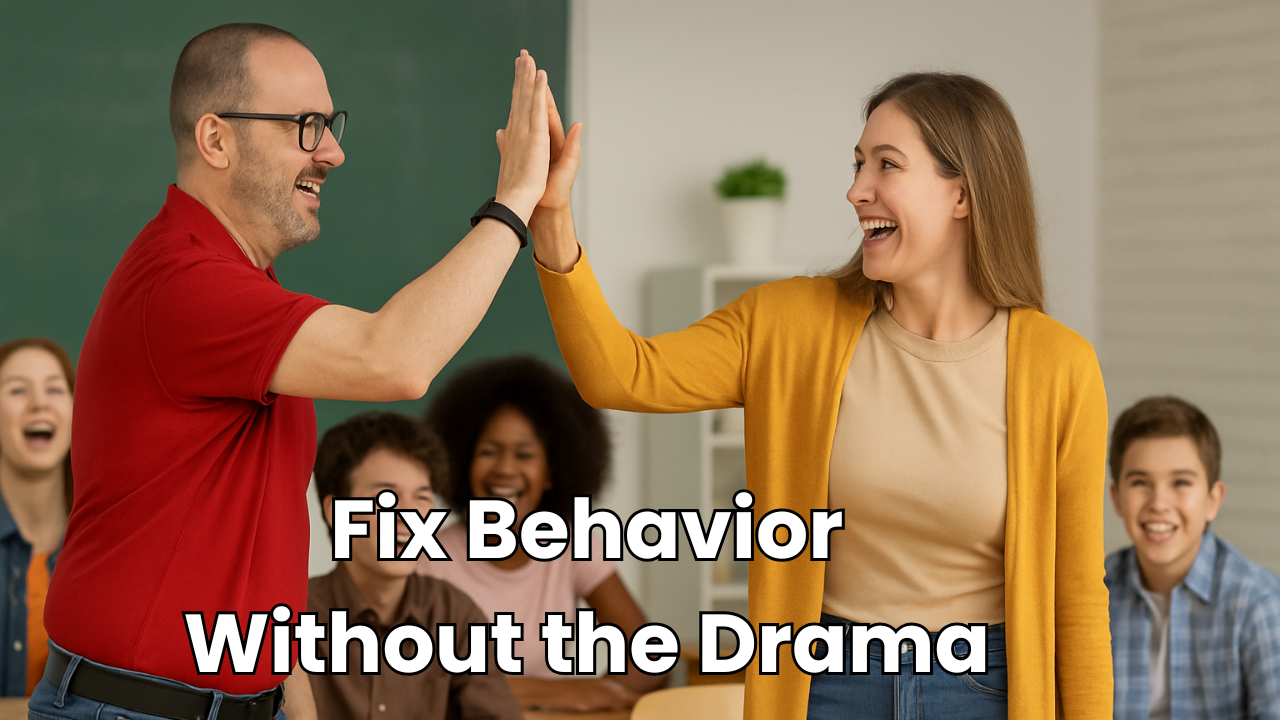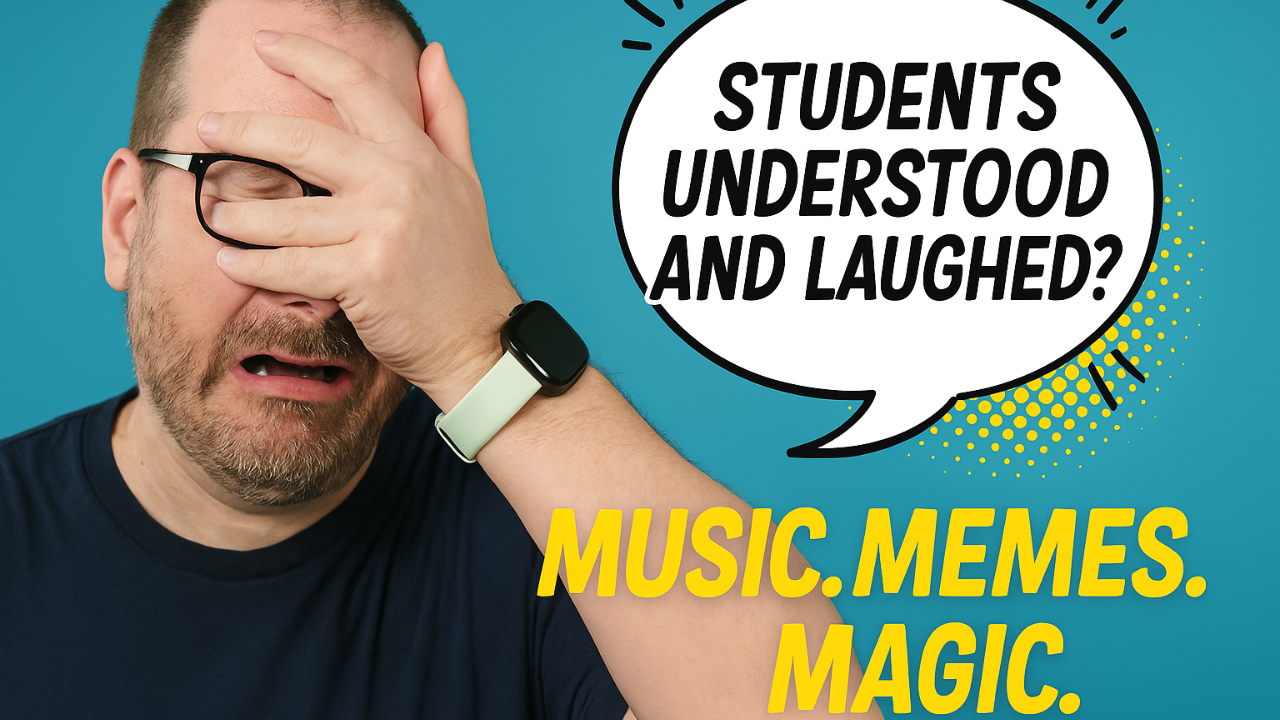
Are you struggling to keep your students focused in today’s tech-heavy classroom? With digital distractions on the rise, it's becoming increasingly challenging to maintain student attention and participation.
In this article, we’ll dive into simple yet powerful strategies to help you conquer digital distractions and achieve classroom success. We'll start by exploring specific techniques designed to keep your students engaged and focused. You'll learn step-by-step how to implement these methods seamlessly into your daily routine, ensuring you can see immediate benefits without feeling overwhelmed.
Introduction to Digital Distractions
Since the onset of the COVID-19 pandemic, technology has become an integral part of education. While digital tools have enhanced learning in many ways, they have also introduced new challenges. Digital distractions are now a significant issue in classrooms, affecting student focus and participation.
Overview of the Rise of Digital Distractions in Post-COVID Classrooms
Before the pandemic, technology was already a presence in education, but its use skyrocketed during remote learning. Now, as students return to physical classrooms, the reliance on digital devices persists. Smartphones, tablets, and laptops are ubiquitous, and while they offer valuable educational resources, they also provide endless distractions.
Impact of Digital Distractions on Student Focus and Participation
Digital distractions can severely hinder learning. Notifications, social media, and online games compete for students' attention, making it difficult for them to stay engaged with lessons. This fragmented attention can lead to lower academic performance, reduced participation, and an overall decline in classroom productivity. As educators, it’s crucial to find ways to manage these distractions effectively.
Effective Techniques to Conquer Digital Distractions
Addressing digital distractions requires a combination of clear guidelines, strategic use of technology, and engaging lesson plans. Here are some practical techniques to help you achieve this balance.
Establish Clear Guidelines
Setting rules for technology use in the classroom is the first step towards managing digital distractions. Clear, consistent guidelines help students understand when and how they can use their devices.
Setting Rules for Technology Use in the Classroom
Establish specific times for device use and non-use. For example, allow devices during research activities but require them to be put away during lectures and discussions. Make these rules visible in the classroom and reinforce them regularly.
Communicating Expectations to Students and Parents
Ensure that both students and parents are aware of your technology policies. Communicate your expectations at the beginning of the school year and include them in your syllabus. Hold a meeting or send a detailed letter to parents explaining the importance of these rules in maintaining focus and enhancing learning.
Incorporate Technology Wisely
While technology can be a source of distraction, it can also be a powerful tool for engagement if used wisely. The key is to find the right balance.
Utilizing Educational Apps and Tools that Promote Engagement
Choose apps and tools that are specifically designed to enhance learning. Platforms like Kahoot, Quizlet, and Google Classroom can make lessons more interactive and engaging. These tools can transform smartphones and tablets from distractions into valuable educational aids.
Balancing Screen Time with Offline Activities
Ensure that your lessons include a mix of digital and offline activities. This balance prevents students from becoming overly reliant on screens and encourages them to engage with different forms of learning. For example, follow a digital activity with a group discussion or hands-on project.
Design Engaging Lessons
Engaging lesson plans are crucial for maintaining student interest and minimizing distractions. Interactive and dynamic lessons capture students' attention more effectively.
Creating Interactive and Dynamic Lesson Plans
Incorporate a variety of teaching methods to keep lessons fresh and engaging. Use videos, interactive quizzes, and group activities to make learning more dynamic. The more varied your lessons, the less likely students are to become bored and seek distractions.
Using Multimedia Resources to Capture Student Interest
Multimedia resources such as videos, podcasts, and infographics can make learning more appealing. These tools cater to different learning styles and keep students interested. Use them to complement your teaching and illustrate complex concepts in an engaging way.
Step-by-Step Implementation of Techniques
Implementing these techniques effectively requires a thoughtful approach. Here’s how to get started.
Start with a Tech Audit
Begin by assessing how technology is currently used in your classroom. Identify the main sources of distraction and areas where digital tools can be better integrated.
Assessing Current Technology Use in Your Classroom
Conduct a survey or informal assessment to understand how students use their devices during class. This will help you identify problematic behaviors and opportunities for improvement.
Identifying Areas Where Distractions Occur Most Frequently
Pay attention to when and where students are most distracted. Is it during independent work, group activities, or lectures? Understanding these patterns will help you tailor your strategies more effectively.
Introduce Gradually
Introducing new techniques all at once can be overwhelming. Instead, integrate them gradually and monitor their effectiveness.
Integrating New Techniques One at a Time
Start with one or two strategies and observe how students respond. Gradually add more techniques as needed, adjusting based on student feedback and performance.
Monitoring and Adjusting Based on Student Response
Regularly check in with students to see how they feel about the new approaches. Are they finding it easier to focus? Use their feedback to refine your strategies and make necessary adjustments.
Consistent Reinforcement
Consistency is key to the success of any new strategy. Regular reinforcement helps students internalize guidelines and expectations.
Regularly Reminding Students of Guidelines and Expectations
Reiterate your technology rules and engagement strategies frequently. Use visual reminders like posters or digital announcements to keep these guidelines top of mind.
Providing Feedback and Positive Reinforcement
Acknowledge and reward students who follow the guidelines and stay focused. Positive reinforcement encourages good behavior and helps build a culture of attentiveness.
Common Challenges and Solutions
Despite your best efforts, you may encounter challenges when managing digital distractions. Here are some common issues and practical solutions.
Tech-Savvy Students
Some students are adept at finding ways around restrictions. Addressing this requires advanced strategies.
Addressing Students Who Bypass Restrictions
Implement advanced monitoring tools and software that limit access to non-educational content. Tools like GoGuardian or classroom management apps can help you keep track of student activity and enforce rules.
Implementing Advanced Monitoring Tools
Use software that allows you to monitor and control what students can access on their devices. These tools can provide real-time insights into student behavior and help you address issues promptly.
Balancing Tech and Focus
Finding the right balance between technology use and maintaining focus is crucial.
Finding the Right Mix of Technology and Traditional Teaching Methods
Alternate between digital and traditional teaching methods to keep students engaged without overloading them with screen time. Use technology to enhance learning, not dominate it.
Encouraging Mindful Technology Use
Teach students about mindful technology use. Help them understand when and how to use digital tools effectively, and encourage them to take breaks from screens to prevent fatigue.
Student Resistance
Students may resist new guidelines and strategies. Overcoming this resistance requires patience and involvement.
Overcoming Reluctance to Follow New Guidelines
Involve students in the process of creating a distraction-free environment. Explain the benefits of the new strategies and how they can help improve their learning experience.
Engaging Students in Creating a Distraction-Free Environment
Encourage students to contribute their ideas on how to minimize distractions. This involvement gives them a sense of ownership and makes them more likely to adhere to the guidelines.
Success Stories and Case Studies
Real-life examples can provide inspiration and demonstrate the effectiveness of these techniques.
Examples of Classrooms that Successfully Reduced Digital Distractions
Share stories from teachers who have successfully implemented these strategies. Highlight specific techniques they used and the results they achieved.
Testimonials from Teachers and Students
Include testimonials from both teachers and students who have experienced the benefits of managing digital distractions. Their insights can provide valuable perspectives and motivate others to try these techniques.
Measuring Effectiveness
To ensure your strategies are working, it's important to measure their effectiveness regularly.
Student Feedback
Conduct surveys to gather student input on the new techniques. Their feedback can help you understand what’s working and what needs adjustment.
Conducting Surveys to Gather Student Input on New Techniques
Create simple surveys to ask students about their experiences with the new strategies. Use their responses to refine your approach and address any issues.
Adjusting Strategies Based on Feedback
Be open to making changes based on student feedback. Flexibility is key to finding the most effective approach for your classroom.
Academic Performance
Track improvements in student performance and participation. Analyze data to measure the impact of your strategies.
Tracking Improvements in Student Performance and Participation
Monitor grades, participation rates, and other indicators of student success. Look for patterns that suggest your strategies are having a positive effect.
Analyzing Data to Measure the Impact of Implemented Techniques
Use data analysis to understand the broader impact of your strategies. This can help you identify areas for further improvement and celebrate successes.
Conclusion and Call to Action
Managing digital distractions is an ongoing challenge, but with the right techniques, it’s possible to create a focused and productive classroom environment.
Recap of Key Points and Benefits of Managing Digital Distractions
To recap, clear guidelines, strategic use of technology, and engaging lesson plans are essential for managing digital distractions. By implementing these techniques, you can help your students stay focused and achieve greater academic success.
Encouragement to Implement the Discussed Techniques
Start small and gradually introduce these strategies into your classroom. Monitor their effectiveness and adjust as needed. Remember, consistency is key to making these changes stick.
Invitation to Share Experiences and Tips with the Teaching Community
We’d love to hear about your experiences with managing digital distractions. Share your tips and success stories with our teaching community. And if you’re looking for more advanced strategies, don’t forget to check out our “Beyond the Basics” course. This course offers in-depth guidance on maximizing language acquisition and managing classroom dynamics effectively. Learn more and enroll here: Beyond the Basics.
By embracing these strategies, you’ll be well on your way to creating a classroom environment where technology enhances learning rather than detracts from it. Happy teaching!
Key Takeaways
- Set Clear Guidelines: Establish and communicate specific rules for technology use in the classroom to help manage digital distractions effectively. Consistently reinforce these guidelines to ensure students understand and follow them.
- Incorporate Technology Wisely: Utilize educational apps and tools that promote engagement and balance screen time with offline activities. This approach helps transform devices from distractions into valuable learning aids.
- Design Engaging Lessons: Create interactive and dynamic lesson plans using multimedia resources to capture student interest. Engaging lessons are crucial for maintaining student focus and reducing the temptation to be distracted by digital devices.
- Implement Techniques Gradually: Start with a tech audit to assess current technology use, then gradually introduce new techniques one at a time. Monitor student responses and adjust strategies as needed for maximum effectiveness.
- Address Common Challenges: Tackle issues such as tech-savvy students bypassing restrictions, balancing technology use with maintaining focus, and overcoming student resistance by involving them in creating a distraction-free environment and teaching mindful technology use.



